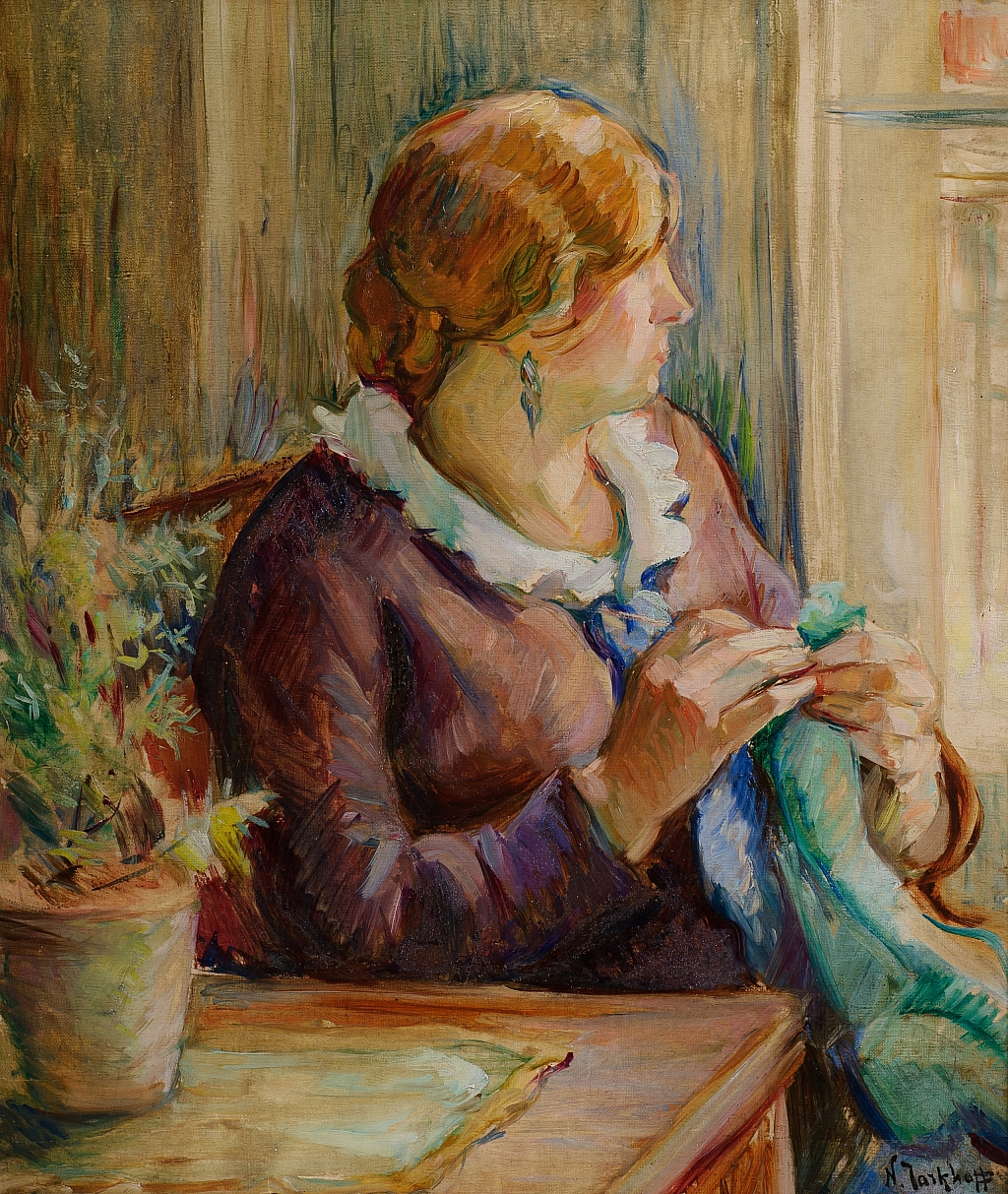
“He got stuck in Paris,” modern art critics say about Nikolai Tarkhov. To which we would add – and he conquered it! Only two years after his emigration, the Paris audience began to recognize Tarkhov’s style: no one else had such a striking manner of painting in vertical sideways strokes. Alexander Benois wrote that you could instantly recognize a Tarkhov among the thousands of paintings at the Paris art salons, while Leon Bakst sarcastically termed the artist’s manner “Tarkhov’s Paris vermicelli.” Let’s examine Nikolai Tarkhov’s brushwork in “At Embroidery”. As a true Impressionist, Tarkhov is perfectly capable of capturing a fleeting movement of the model. We see the lady distracted from her meticulous work and looking out of the window, as if some sound had caught her attention for a second. For his frequent use of sober colours, Nikolai Tarkhov was more than once accused by critics of not being able to get rid of the light and colour of the severe Russian nature that he had known. Such barbed criticism did not affect the artist’s popularity, however, nor did it diminish his success. The painter would go on to have personal exhibitions in Europe and be valued in the Soviet Union. There he was compared with the likes of Igor Grabar and Konstantin Yuon.



